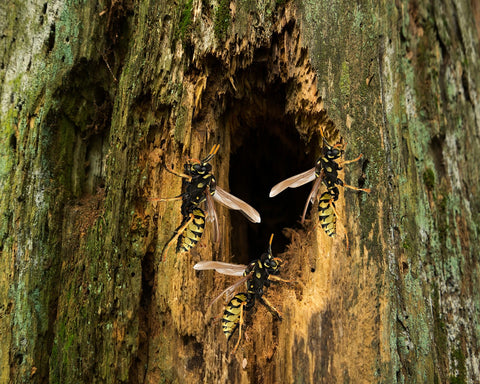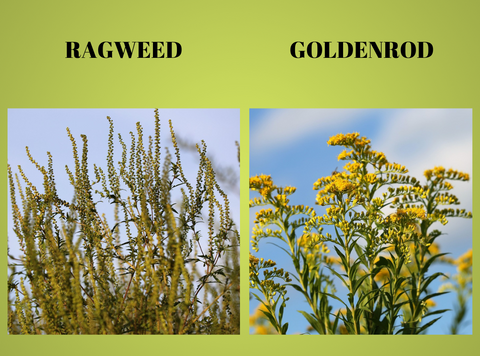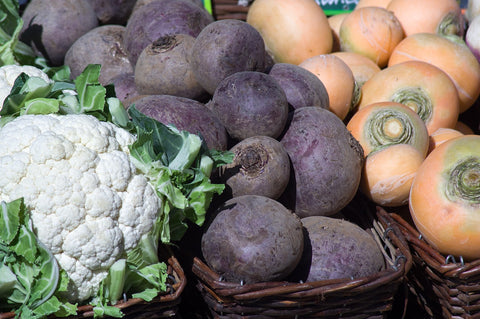Several customers are complaining about Wasp, Hornets, Cicada Killers, and Yellow Jackets being extremely aggressive this year. Fall is the time that we will notice an increase in the activity of wasps and bees.
These insects are busy this time of year collecting nesting materials, food to store, and preparing to keep their lineage alive. They become frenzied and will rob food from other hives. This time of year, open drinks will be visited by bees as they are drawn to the sugars. Picnics can be interrupted by foraging bees looking to steal something to take back to the hive. Bees will fly close to view brightly colored clothes in hopes of collecting nectar.
Wasp and Bees typically hatch in the spring, mate, raise brood, and then begin to prepare for winter. This preparation includes nurturing impregnated queens to survive the winter. Nests can be solitary or a hive structure.
Cicada Killers are solitary bees that catch cicadas to push into their single nest so their larva can survive the winter. Females collect cicadas by stinging them to paralyze them for storage for their pupa to eat when they emerge in spring.
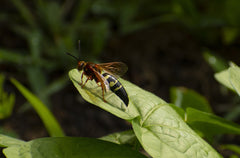
They prefer loose sandy soils as digging is easier. They are menacing in size and sound but are not aggressive unless you are destroying their nest sites. The males can not sting but will fly close to scare you away from their nest site. Females can sting, but only as a last resort, as they want to save their venom for killing cicadas. These may return to the same location each year to rear their young and if they are present in your yard change the environment to eliminate them wanting to nest. Keep the area wet, add compost to make the soil less friable, or cover the area.
Bald Faced Hornets collect wood pulp to enhance the construction of their large paper-like round gray nest. Their main diet consists of a variety of caterpillars and
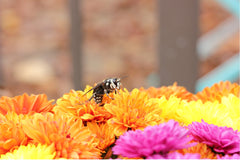
yellow jackets. They will protect their nest and chase suspected enemies away from them. Hives are often found in shrubs and trees at varying heights with leaves often used to camouflage the exterior. When mowing near larger shrubs and trees, use caution, especially in the late summer when they are preparing for winter and producing their queens. These impregnated queens will hide over the winter in rotting wood, under rocks, in structures or in holes in the ground.
European hornets which are slightly smaller than Cicada killers live in hollows in trees or old buildings. They produce a hive covered with a thick darker brown pulp. If the nest is in a hollow of a tree the honeycomb is often visible. If it is a
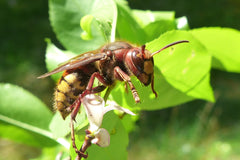
ground nest it is often completely covered with dark brown pulp. Depending on the size of the hive, bee counts can range from 80 to 400. These hornets feed on other insects including yellow jackets, grasshoppers, large flies, and other large insects as well as fruit, tree sap and honeydew. They are also attracted to outdoor lighting where they will hunt bugs. They sting if threatened. Each fall the hive will produce several impregnated queens that attempt to overwinter in dead wood, hollow trees or in any structure that they can hibernate in undisturbed.
Paper Wasps nest in eves, corners of houses, and under deck planks. They attach a softball-sized gray papery nest that resembles a lotus seed pod. The

young are reared in the nest and protected by the adult wasp. Wasps are especially protective of their nest during brood season and when preparing for winter when several impregnated queens will leave the nest to find shelter to overwinter. Wasps prefer to eat insects and pests of gardens. Often, they will eat fruit leaving slight unwanted markings on the skin. They eat soft wood to regurgitate and make their nest.
Yellow Jackets are the most aggressive of the wasps. They are smaller than the Paper Wasp and fly quicker. They will nest high in a tree cavity or can be ground nesters entering a small hole usually near a stump or in a pile of leaves or debris. Over 4000 yellow jackets can be in a colony. Yellow Jackets are aggressive when protecting their hive and can sting many times each. They chew on soft wood taking it into the hive to build the brood cells. They prey on smaller
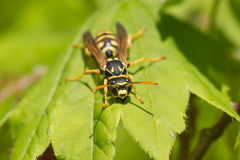
insects, fruits, and love sugar. They can get aggressive around picnics after such foods as watermelon, sodas, and sweets. They produce impregnated queens in late fall that hide under debris, in other hives, or in rotting wood over the colder months. Once warm weather returns the queen, now called a foundress, starts a new hive.
All of these have been extremely busy this year as many of the queens and larvae survived the winter months and there seems to be an abundance. Also, we are moving into their habitats as we develop farmland and woods. If hives are in a traveled area or location use caution, especially during late summer when they can be more aggressive. Many sprays are available, and it is often best to treat in the evening when they usually are tending to their nest and not actively flying. Keep your pets out of the area as they will attack them. If the nest is in the ground, use foamy sprays to fill the hole or throw an insecticidal powder into the hole which they will carry into the nest.


